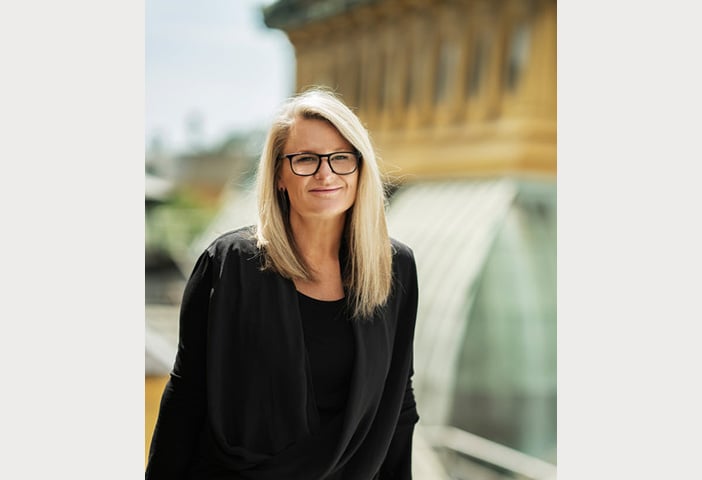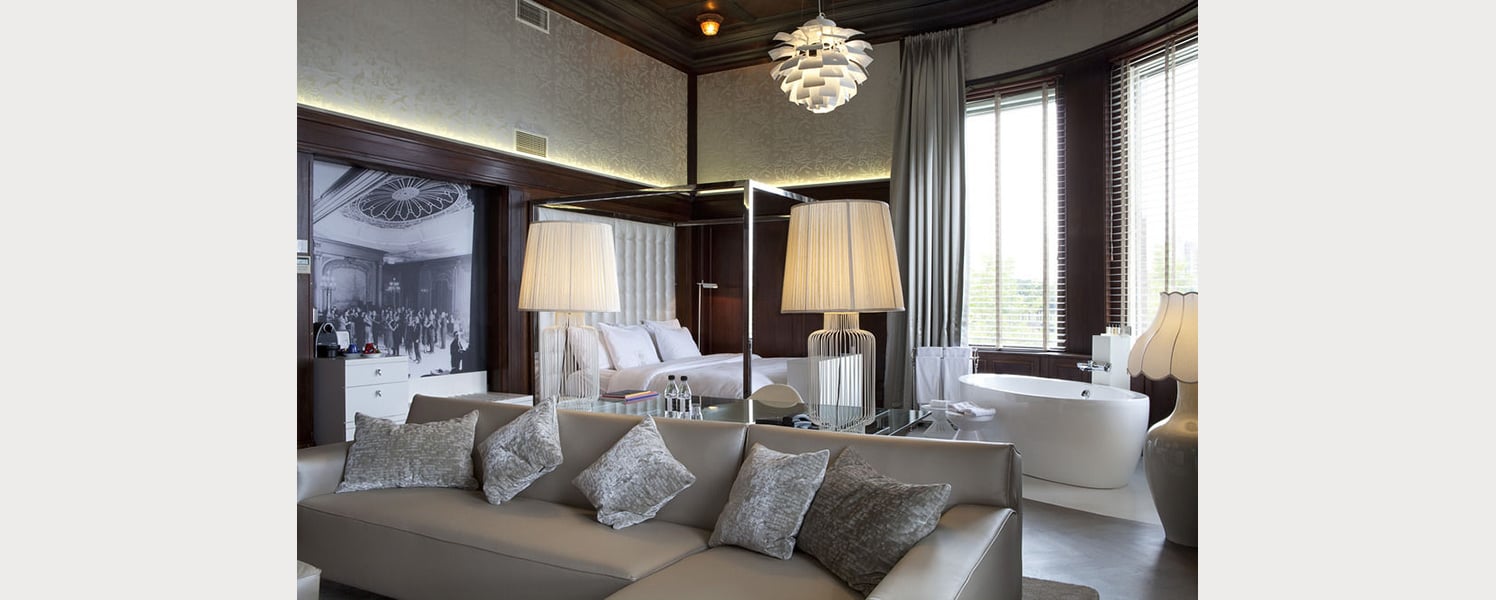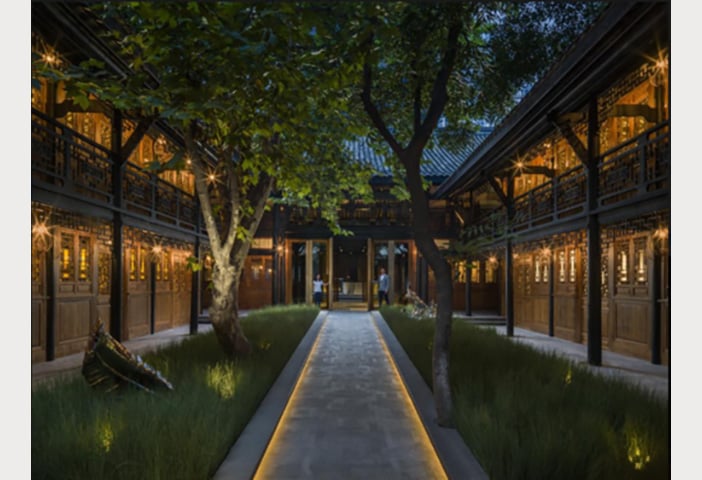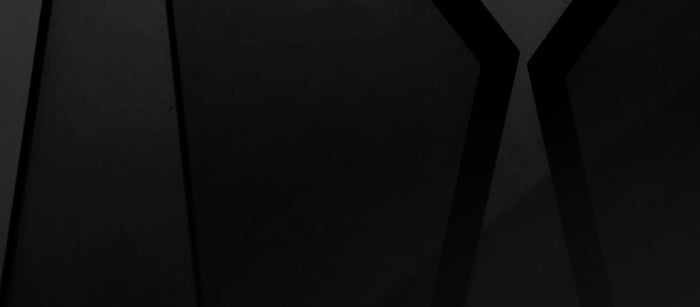
With a list of clients from Ian Schrager to Lord Norman Foster and the Temple House hotel group in Chengdu, Tracey Wiles has developed a sixth sense for understanding the way we like to live, especially when we travel.
At a time when hotels are looking to design with fresh eyes, more space caught up with Tracey to discuss where hotels are heading, the impact of the sharing economy, her favourite places in the world to stay, and why designers may be holding the golden ticket.
more space: We recently interviewed hotelier Luis Contreras who is behind Il Sereno designed by Patricia Urquiola. He spoke about his family’s philosophy for keeping it small, managing it themselves, knowing the customer and tailoring the offering. Are we at a turning point with hotel design today?
Tracey Wiles: I love Lake Como and this hotel looks amazing! I believe with the increase in both international and domestic travel that there is room for many varying hotel typologies. Our search criteria differs from city to city and the company we keep. What it does do is challenge hoteliers and designers alike to offer an authentic experience in an appropriate price bracket. Ultimately it is about the authenticity of the experience.
With Airbnb offering a new way to stay in cities, how are the hotel clients you work with addressing that level of competition. Is design the real opportunity here?
Airbnb and the sharing culture are accepted by hotelliers as an alternative offer. They are now firmly rooted in the accommodation landscape. However, one aspect that sets hotels and the share accommodation culture apart is service. The welcome, the morning paper, room service, local knowledge, connectivity with place and people. All the hotel conferences, operators and owners accept the competition is here to stay and are rebutting by raising their game. There is always opportunity for exceptional design.

After more than a decade overseas, Tracey Wiles is now working with Make architects in their Sydney office, focusing on hotel projects and private residences.

The Riad in Marrakesh where Tracey and her family were immersed in the local culture.
How are hotels changing what they offer?
I think it’s really interesting. I just went to a Marriott branding workshop where they were briefing designers on all of their brands, they own around 30 I think, and are now one of the biggest hoteliers worldwide. For the Marriott it is all about diversity and they have a narrative for every single hotel. That diversity is important. People are looking for different things. I have stayed in six and seven star hotels and also with Airbnb, we have the choice. Five year ago hotels were worried about Airbnb, now they look at how they will respond with design.
Do you think our basic needs haven’t really changed?
That is exactly it. Twenty-five years ago we were talking about the office of the future and 25 years later we are still talking about it. The discussion hasn’t really shifted. In hotels across the board, there is definitely a push to have more clubs and more meeting areas, smaller bedrooms and larger bathrooms, with private spas for luxuriating in.
As an antidote to living fast do you think we are looking for stillness, places that are calm and beautiful when we travel?
People do want to want to retreat. The calmess of material is a reaction to technology and the need for calm. I remember when I moved to London and boutique hotels were happening and I was disappointed because they were often badly made. I want to build things with logevisty and I know people are drawn to that. We do want something that feels like quality and that is certainly what we are hearing from our clients.

Hotel New York in Rotterdam. Image c/o Tracey Wiles.
"I want to build things with logevisty and I know people are drawn to that. We do want something that feels like quality and that is certainly what we are hearing from our clients."
Tracey Wiles, Make architects
Can you describe a few of your favourite hotels and what they offer that makes them special?
I am a hotel junkie so I love staying in different places. Alila hotels in Bali captures the understated essence of its location with indigenous elegance, amazing service and connectivity to the local culture. Hotel New York in Rotterdam (an unusual one) is a witty, yet basic, refurbishment of a piece of cultural and architectural history. The engendered narrative is clear but understated. Most beguiling is the Sunday brunch with all generations, locals and tourists alike gathering. Amongst all the noise it has become a place where locals and visitors connect. Mercer Hotel in New York, for its understated warehouse chic and connectivity to its neighbourhood. The Ned in London transports guests back to the glamour of the 1930s. I also have a nostalgic love for the seaside glamour of Philippe Starck's Delano Hotel in Miami.
Is the sharing economy also influencing the traditional hotel model?
Absolutely. All of these influences are in play and very much effect the way we design hotels. Bumble the women's dating app. has very recently announced 'the hive'. It is a place where woman meet and greet, book inspirational speakers, (net)work, socialise, and relax. Access will be via your online Bumble membership. It is a fascinating development of technology and social media normalising itself in the real world. And of course it is a pop-up minimising the risk of being outdated. The ever present effect this has on the design of hotels (less so in other sectors) is the need for the media image, the 'insta' moment that is frequently winning design competitions. There is a great increase in design companies teaming up with branding companies to help find the big brand idea, the hook to sell to the client. Branding driving interiors, interiors driving architecture, it is becoming a more prevalent model. Clearly this has its implications with longer, complex building programmes throwing a spotlight on the power of the image or brand over the permanence and longevity of the project. Instagram images are released years before (and blatently reproduced) often prior to the completion of the originator. High quality design needs to be exposed to everyone because that will lift the game.
How have these influences shaped the way Make architects designs hotels?
I spend more time than I ever thought I would designing bespoke lights, handles and details that make a project special and luxurious, but also unattainable so no one can really copy it. Part of our mantra is to design the best places in the world. We respond to a hotel project, the client’s legacy, the budget, the site conditions. Say, with Temple House, the interiors and architecture are a real response to site and immediately you have a contextually grounding and local materiality. We alway develop a very strong concept and narrative. In China that was about responding to the surrounding paddy fields. So the concept and narrative are part of the architecture do that people are transported. It’s an amazing experience when that happens. You leave an impression on people and that’s what is really important about creating a sense of place. Generally for clients that is what they want. When I arrived in London I worked on St Martins Lane Hotel with Philippe Starck and Ian Schrager. All these years later, St Martins and the Sanderson are still great hotels. Copies have come and gone but they remain. They have their own language. Ian Schrager is a genius. He always manages to transport you to a different world and hotels should do that.
"Modern life is overloaded with sensory stimulation: in the workplace, street and home. We are seeking refuge from this. The human spirit responds to the colours and tactility of nature. Glossy, high-tech, bright interiors, are less inclusive in the escape from our fast-paced world."
Tracey Miles, Make architecture

The Alila resort in Bali embeds local culture and the connection with nature in the design experience.

The central courtyard of Temple House by Make architects was inspired by traditional paddy fields that surround the hotel.
What is luxury to you and has it changed?
Luxury is generosity, exemplified by service, time and space. Less well-designed hotels are a pleasure to stay in if the staff invest time and understanding in their customer's needs. The large mirror, the scented candle beside the bath, the extra large and soft towel, big beds with even bigger views. So many of us live in beautifully designed houses and we want to experience something simplistic in nature and intrinsic to a unique experience. This embodies luxury for me.
We seem to be experiencing a more materially connected, rawer and more tactile moment, or am I misreading this?
I believe this is very true (but it's not stopping me inserting a glossy finish for depth and contrast to all those luscious matts). Modern life is overloaded with sensory stimulation: in the workplace, street and home. We are seeking refuge from this. The human spirit responds to the colours and tactility of nature. Glossy, high-tech, bright interiors, are less inclusive in the escape from our fast-paced world.
Technology and robots are impacting all kinds of sectors… how are they changing the hotel experience?
The Weird Hotel in japan has no concierge and the receptionist is a dinosaur. I do want to take my kids there. Robotics can really help us, but nothing is going to replace that personal attention. However, technology is transforming hotel operations behind-the-scenes. Micro-fabrics that need no water have replaced traditional cleaning methods, and data collection is in equal measures frightening and fantastic. I do love it when someone calls me by my name and remembers my favourite restaurants. But it really is a double-edged sword.
You have travelled a lot... what do you look for and what are some of the more surprising experiences you have had?
I have spent 18 years away from Australia and yes, extensively travelled. I always look for the unique contextural experience. I (like many) want to feel the place, culture, climate. A very overused term but resolutely true, many of us are looking for local authentic experiences that will enrich our understanding of the world and better ourselves as people. One of the most rewarding experiences was house swapping to a gorgeous Riad in Marrakesh, I was alone with two young children navigating the frenetic souks and traders. The sights, sounds and colours (and the attention to my two little blondes) was overwhelming. Retreating to the Riad and its amazing staff was an oasis. The undeniable and complete diversity and drama of the two experiences was a life-changing experience for all of us. Is there a new trend you see that is going to be big? This isn’t my prediction but there has been a bit of talk about it…. Rob Wagemans from Concrete, a design agency in Amsterdam, is saying this and I think it is true. The future is going to be about downsizing you home and living globally. He wants to live and work between Amsterdam, New York and London, in a smaller apartment, serviced like a hotel room would be.
I think that’s where we are pushing, downsizing and living globally – don’t we all want to live that way?
Given an open brief and an open client, can you describe the kind of hotel you would love to design? Don’t tempt me! I have always fantasised about that perfect discrete hotel that is known only by word of mouth, the home away from home in an exotic location. Every element from the architecture to the candle considered. A sense of place so unique it cant be reproduced. The staff discrete but always available, a place you feel privileged to experience and only pass the secret on to the best of friends.
Thanks Tracey.
Tracey Wiles joined Marcel Wanders, Founder, Creative Director, designer and owner of Moooi; Jonathan Richards, Director Interior Design Sydney at SJB; and Cameron Bruhn, Editorial Director of Architecture Media; at Space – Australia, to discuss how hotel owners are investing in design, and why now in the world of social media, design is so essential for success.

